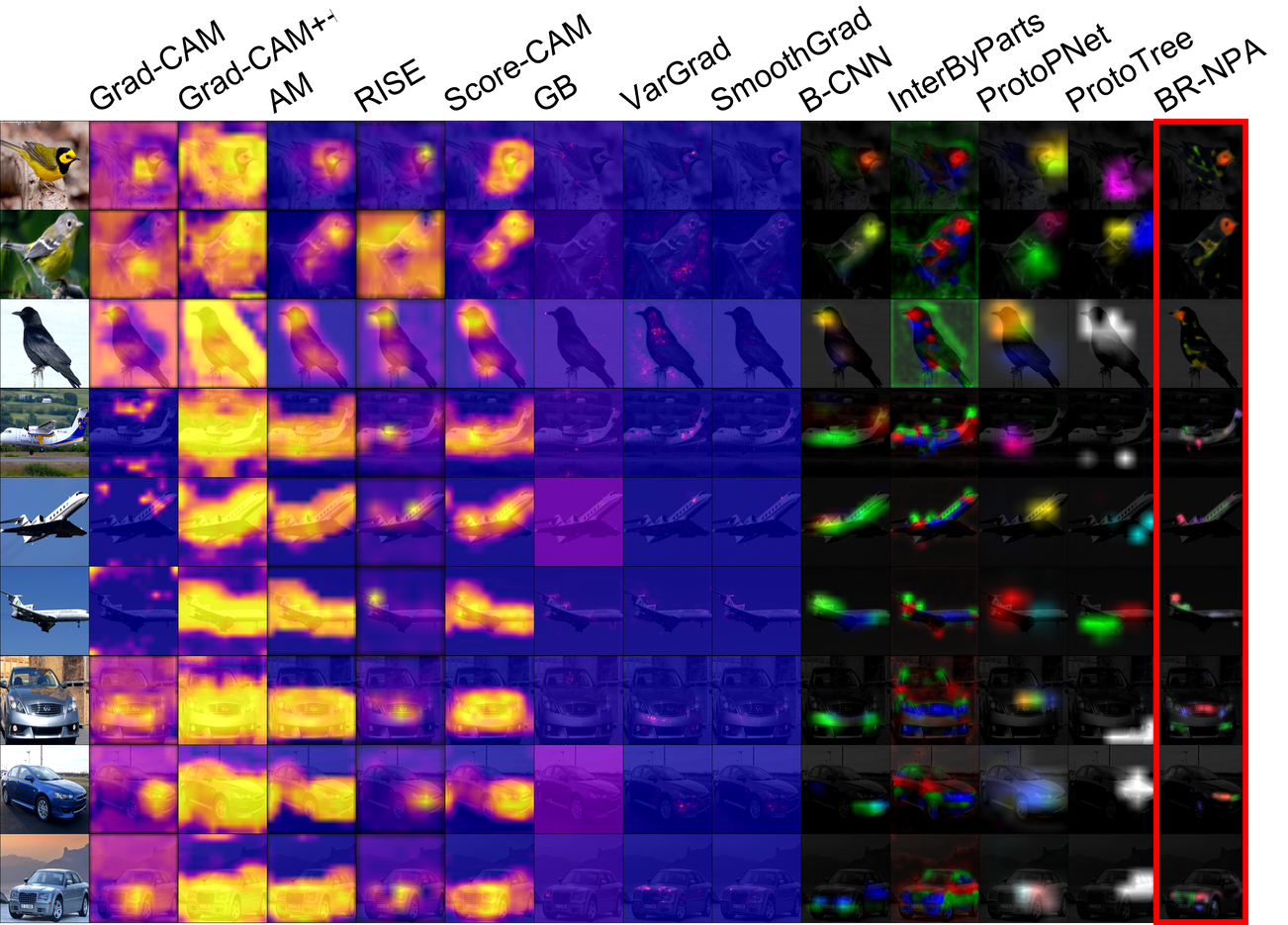BR-NPA: A Non-Parametric High-Resolution Attention Model to improve the Interpretability of Attention
The prevalence of employing attention mechanisms has brought along concerns on the interpretability of attention distributions. Although it provides insights about how a model is operating, utilizing attention as the explanation of model predictions is still highly dubious. The community is still seeking more interpretable strategies for better identifying local active regions that contribute the most to the final decision. To improve the interpretability of existing attention models, we propose a novel Bilinear Representative Non-Parametric Attention (BR-NPA) strategy that captures the task-relevant human-interpretable information. The target model is first distilled to have higher-resolution intermediate feature maps. From which, representative features are then grouped based on local pairwise feature similarity, to produce finer-grained, more precise attention maps highlighting task-relevant parts of the input. The obtained attention maps are ranked according to the activity level of the compound feature, which provides information regarding the important level of the highlighted regions. The proposed model can be easily adapted in a wide variety of modern deep models, where classification is involved. Extensive quantitative and qualitative experiments showcase more comprehensive and accurate visual explanations compared to state-of-the-art attention models and visualizations methods across multiple tasks including fine-grained image classification, few-shot classification, and person re-identification, without compromising the classification accuracy. The proposed visualization model sheds imperative light on how neural networks `pay their attention' differently in different tasks.
PDF Abstract





 CUB-200-2011
CUB-200-2011
 Market-1501
Market-1501
 Stanford Cars
Stanford Cars
 FGVC-Aircraft
FGVC-Aircraft
 tieredImageNet
tieredImageNet